#tiglath pileser
Text
Isaiah 17: An Oracle Against Damascus
The prophet Isaiah turned his gaze northwards to the alliance of Israel – called Ephraim in the text, the Northern Kingdom – and Damascus.
#Isaiah17 #Damascus
After beginning with Moab to the south, the prophet Isaiah turned his gaze northwards to the alliance of Israel – called Ephraim in the text, the Northern Kingdom – and Damascus. Isaiah addressed them together, as they were allied in opposition to both Assyria and to Judah.
A theoretical map of the region around 830 BCE. Moab is shown in purple on this map, between the Arnon and Zered rivers. |…
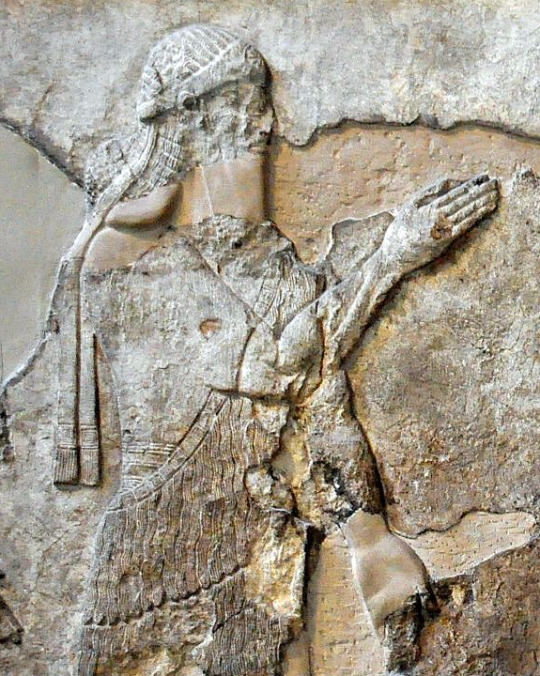
View On WordPress
#Damascus#Ephraim#Genesis 3#golden calf#idolatry#Isaiah 17#Jeroboam#Pride#shalmanezzar#tiglath pileser
0 notes
Photo

Tiglath Pileser I
Tiglath Pileser I (reigned 1115-1076 BCE), an Assyrian king of the period known as the Middle Empire, revitalized the economy and the military that had been suffering, more or less, since the death of the king Tukulti Ninurta I (1244-1208 BCE). The old kings like Adad-Nirari I, Shalmaneser I, and Tukulti-Ninurta I had expanded the empire out from the city of Ashur and filled the royal treasuries with wealth from their conquests. The kings following Tukulti-Ninurta I, however, had been content with maintaining the empire as they inherited it, without improving or expanding on their inheritance, and so steadily lost territory to invading tribes or rebellious factions within the empire. The historian Susan Wise Bauer comments on this writing, “Tiglath Pileser wanted more. He was the first warlike king since Shalmaneser, eight generations and a hundred years earlier. He turned against the invaders and used their attacks to take more land for himself. And for a brief period – a little under forty years – Assyria regained something like its previous luminescence” (287). He campaigned widely throughout his reign with his army, initiated great building projects, and furthered the process of building a collection of books at the library of Ashur by gathering cuneiform tablets from throughout the empire.
Learn more about Tiglath Pileser I
37 notes
·
View notes
Text
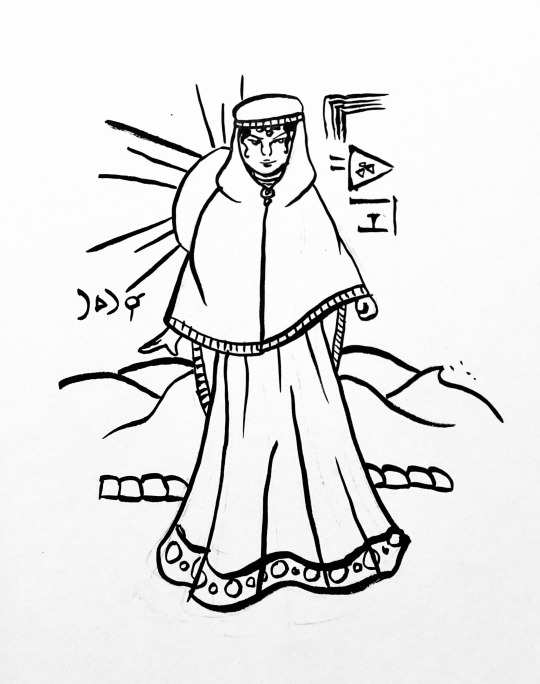
Day 30: Šamši!
Šamši was queen of the Qedarites, a group of ancient Arabian tribes who had become confederated under one leader, during the 8th century BC. Queens were not unusual among them; indeed, Šamši’s predecessor and successor were both women.
Šamši’s people were vassals of the powerful Assyrian Empire, but Šamši dreamed of independence. When a number of vassal kingdoms, led by Rezin of Damascus, rebelled, she quickly joined their alliance against Assyria’s expansionist (and, they hoped, therefore distracted) king, Tiglath-Pileser III.
When the king turned his attention to the rebel Qedarites, Šamši stood and fought, but her army was staunchly defeated. The survivors, their Queen among them, attempted to retreat, but Šamši was captured and taken before Tiglath-Pileser. It may have been Šamši’s diplomacy, the king’s chivalry, or simply the realpolitik of running a burgeoning empire, but Šamši was restored, conditionally, to her throne. Her people would survive.
(Very rough day, very simple drawing)
#šamši#sâmsi#arabian history#assyria#history#awesome ladies of history#october 2023#my art#pen and ink#brush pen
22 notes
·
View notes
Text
I posted an insanely bullshit theory when I got lost in the Wikipedia labyrinth that I soon deleted after coming out, regaining my sanity, realising it was far more bullshit than bullshit.
Here's some stuff I salvaged from the shit because it's interesting:
Marina is a western name. Marina holds the Changeling soul. Changeling is a being that replaces someone's identity. Primarily they steal bodies of children, making the myth of the stolen child. The difference between a doppelganger and a changeling, is that a doppelganger completely replaces the person, but exists as a separate double, meanwhile a changeling imperfectly replaces a person, resulting in deformities, and desires to steal the identity of the chosen human completely. That may be the reason why she's born with a male body instead of the correct body, the female body.
Changeling takes identities like skin-wearing:
"Interesting note on Gro-Goroth - he is curious kind. More so than many of the other older gods. To relieve the feeling of fear, Gro-Goroth wears bodies and skin of men and women alike. He might still be walking among us, masked under the skin of people and hanging bodies, blessing us with his blood magic."
Is Marina Grogoroth? Honestly it's fucking funny if it is.
"Some stories tell of changelings who forget they are not human and proceed to live a human life. However, in some stories, changelings who do not forget return to their fairy family, possibly leaving the human family without warning. The human child that was taken may often stay with the fairy family forever. Feeling connected to a changeling's fate, some families merely turn their changeling loose to the wilderness."
"Pericles and his crew arrive in Myteline, and Lysimachus goes out to meet the ships. Helicanus explains that Pericles has not spoken in three months, and Lysimachus says he knows someone in his city who may be able to make him talk. Marina is brought to the ship, and she tells Pericles that her own sufferings must match his. He asks her about her birth, and she says her name is Marina. Startled, Pericles asks her to continue, and to his surprise finds that everything Marina says matches the story of his own lost Marina. They are reunited, but Pericles is exhausted, and in his sleep the goddess Diana tells him to go to her temple in Ephesus and tell of his experiences. When he wakes, he promises Marina to Lysimachus, and they set off for Ephesus."
Marina's moonscorched is a cocoon, a desire to shed her skin to wear a fitting one.
Marina's appearance is in opposite of Samarie. Note about changelings: "Beauty in human children and young women, particularly traits that evoke brightness or reflectivity, such as blonde hair and blue or silver eyes, are said to attract fairies, as they perhaps find preciousness in these traits.[8]"
Samarie's appearance is the opposite of Marina, monotone and sharp.
Samarie is an eastern name. "Samaria's biblical name, Šōmrōn (שֹׁמְרוֹן), means "watch" or "watchman" in Hebrew.[7] The Bible derives the name from the individual (or clan) Shemer (Hebrew: שמר), from whom King Omri (ruled 880s–870s BCE) purchased the hill in order to build his new capital city (1 Kings 16:24).[8]In earlier cuneiform inscriptions, Samaria is referred to as "Bet Ḥumri" ("the house of Omri"); but in those of Tiglath-Pileser III (ruled 745–727 BCE) and later it is called Samirin, after its Aramaic name,[9] Shamerayin.[10] The city of Samaria gave its name to the mountains of Samaria, the central region of the Land of Israel, surrounding the city of Shechem. This usage probably began after the city became Omri's capital, but is first documented only after its conquest by Sargon II of Assyria, who turned the kingdom into the province of Samerina.[11]"
Samarie's moonscorched form may be based on the Eye of Ra, Hathor, The Goddess of Love. Samarie is depicted heavily on the right side, her right hand is completely different from her left hand, her right hand has four fingers and an eye in her palm which may be a reference to "Hathor of the four faces" and "Eye of Ra"
"As the goddess of motherhood and childbirth, she was called the ‘Mother of Mothers.’ As the goddess of sexuality and dance, Hathor was called the ‘Hand of God’ or ‘Lady of the Vulva.’ These were both supposed to refer to the act of masturbation"
Samarie holds the radiant soul, could it connect to the Zagmuk Festival:
The first New Year’s tradition came from the southern Mesopotamian city of Ur (sometime around 2500 BC), where they worshipped the moon god Nanna as city god. In this light it is not surprising that the New Year’s festival was celebrated at the spring and autumn equinoxes: at that moment, sun and moon are equally long visible in the sky. At the autumn equinox the moon triumphed over the sun and this was ritually re-enacted by taking the god out of the city after which he returned in a triumphant procession; thus the moon god almost literally took possession of his city again as victor. At the spring equinox the same thing happened, possibly to counteract reality. The most famous New Year’s festival is the one celebrated in Babylon for the city god Marduk. Related to the rise of Babylon as religious and later also political capital, Marduk was worshipped throughout the empire, often together with his son Nabû (god of scribes). In Babylon the New Year’s festival was connected to the myth Enuma Elish, the Mesopotamian story of creation in which Marduk conquers the old gods and creates the world. The exaltation of Marduk in the New Year’s festival of Babylon is very explicit because we know that the myth was recited then, and most researchers agree that at this time the festival was a representation of the story.
Zagmuk (Sumerian: 𒍠𒈬, romanized: ZAG.MU, lit. 'New Year' [1]), which literally means "beginning of the year", is an ancient Mesopotamian festival celebrating the New Year. The feast fell in December[2] and lasted about 12 days.[3] According to the Scottish anthropologist Sir James George Frazer in the second edition of his study "The Golden Bough" (iii. 181, 182.), the date of the festivity of the beardless one was "the first day of the first month, which in the most ancient Persian calendar corresponds to March, so that the date of the ceremony agrees with that of the Babylonian New Year Festival of Zakmuk".[4] It celebrates the triumph of Marduk, the patron deity of Babylon, over the forces of Chaos, symbolized in later times by Tiamat. The battle between Marduk and Chaos lasts 12 days, as does the festival of Zagmuk. In Uruk the festival was associated with the god An, the Sumerian god of the night sky. Both are essentially equivalent in all respects to the Akkadian "Akitu" festival. In some variations, Marduk is slain by Tiamat on the winter solstice and resurrected on the vernal equinox.[5]
In Babylon, the battle was acted out at the royal court with the king playing Marduk, and his son-rescuer as Nabu, the god of writing. Once freed from the powers of the underworld, the king would enact the rite of hieros gamos on the 10th day of the ceremony. During this rite, the king (or En, as he was known in Sumer) would perform sexual intercourse with his spouse, normally a high priestess who had been chosen from among the naditum, a special class of priestesses who had taken a vow not of celibacy precisely, but of a refusal to bear children. The high priestess was known as the entu, and her ritual act of intercourse with the king was thought to regenerate the cosmos through a reenactment of the primordial coupling of the cosmic parents An and Ki, who had brought the world into being at the dawn of Time. If an eclipse of the sun fell on any of the 12 days of the ceremony, a substitute for the king was put in his place, since it was thought that any evils which might have befallen the king would accrue to the substitute instead. On the last day of the festival, the king was slain so that he could battle at Marduk's side. To spare their king, Mesopotamians often utilized a mock king, played by a criminal who was anointed as king before the start of Zagmuk, and killed on the last day.
Sacred sexual intercourse is thought to have been common in the Ancient Near East[2] as a form of "Sacred Marriage" or hieros gamos between the kings of a Sumerian city-state and the High Priestesses of Inanna, the Sumerian goddess of love, fertility and warfare. Along the Tigris and Euphrates rivers there were many shrines and temples dedicated to Inanna. The temple of Eanna, meaning "house of heaven"[3] in Uruk[4] was the greatest of these. The temple housed Nadītu, priestesses of the goddess. The high priestess would choose for her bed a young man who represented the shepherd Dumuzid, consort of Inanna, in a hieros gamos celebrated during the annual Duku ceremony, just before Invisible Moon, with the autumn Equinox[5] (Autumnal Zag-mu Festival). In astronomy, the new moon is the first lunar phase, when the Moon and Sun have the same ecliptic longitude.[2] At this phase, the lunar disk is not visible to the naked eye, except when it is silhouetted against the Sun during a solar eclipse.
Hieros gamos, hieros (ἱερός) meaning "holy" or "sacred" and gamos (γάμος) meaning "marriage," or Hierogamy (Greek ἱερὸς γάμος, ἱερογαμία "holy marriage"), is a sacred marriage that plays out between gods, especially when enacted in a symbolic ritual where human participants represent the deities.
The notion of hieros gamos does not always presuppose literal sexual intercourse in ritual, but is also used in purely symbolic or mythological context, notably in alchemy and hence in Jungian psychology. Hieros gamos is described as the prototype of fertility rituals.[1]
Maybe it also connects to Berserk's eclipse:
The Eclipse (蝕; literally "occultation"), also known as an occultation ceremony, is a rare sacrificial ceremony occurring once every 216 years, during which a new member of the God Hand is to be born.
Griffith's occultation is alluded to in a Holy See prophecy which states that the appearance of a red lake when the sun "dies five times" heralds the birth of an angel signaling the beginning of an "age of darkness".[10] In a fierce battle with Guts and Griffith, Zodd recognizes Griffith's importance after noticing the young man's Crimson Beherit and so spares him.[11] The Eclipse occurs a year after Griffith is rescued by the Band of the Falcon from his crippling imprisonment in the Tower of Rebirth.[12]
It may be referencing to Mirrai Nikki as well? After all it's the Termination Festival. Interestingly, Samarie wasn't included as a participant at first:
You’ll surrender now, we are sure of what we see….
Thee can’t resist this fantasy!!!!!
Survive!!!!!!
Consentes: Juno, Jupiter,
Minerva, Apollo, Mars, Ceres,
Mercury, Diana, Bacchus,
Vulcan, Pluto, Vesta, Venus.
Deep in the abyss of light slumber, we sway with half-closed eyelids.
Smiling, the gods of dreams and fantasy elegantly impart death,
while the chains of karma, which dictates time and space, are becoming tangled.
It's a fantasy program bestowed by the gods.
Saa eins zwei drei! We shall become one.
Saa eins zwei drei! We shall evade death.
We'll snatch away the miracle that's thirsting for a survival game of annihilation,
just like a spiral.
Consentes: Juno, Jupiter,
Minerva, Apollo, Mars, Ceres,
Mercury, Diana, Bacchus,
Vulcan, Pluto, Vesta, Venus.
As though to rewrite the transient foam-like future,
the noises of reincarnation, which holds the fantasies together, are resounding.
Time is distorting, while the melodies and laws of karma are crumbling away.
It's a succession program bestowed by the gods.
Saa eins zwei drei! We shall become links of one chain.
Saa eins zwei drei!We shall shake ourselves free of death.
We'll contend for a miracle that will fight against this eraser game of annihilation,
just like a fantasy dream.
It's a puppet program bestowed by the gods.
Saa eins zwei drei! We shall become one.
Saa eins zwei drei! We shall evade death.
Saa eins zwei drei! We shall become links of one chain.
Saa eins zwei drei! We shall shake ourselves free of death.
We'll snatch away the miracle that's thirsting for a survival game of annihilation,
just like a spiral.
The bystanders, while pitying us,
were even farther away than the life or death we longed for.
In a tiny garden at the end of the ends,
I believed that there would be a boundless miracle.
Resurrection by Erection? Termina Festival is 3 days after all:
When purgatory's waiting the girl immaculate
The highest of commandments dictates to copulate
No grave is animated, you're buried all alone
So let her work a wonder and wake your flesh and bone
Resurrection by erection
Raise your phallus to the sky and you never die
It's resurrection by erection
Raise your bone up to the sky and you never gonna die
Hallelujah, resurrection
The funeral is calling the mortuary blow
Between my legs I'm waking, I rise from down below
Why do you think, believer, God gave you carnal lust?
So pray to get a hard on before we turn to dust
Resurrection by erection
Raise your phallus to the sky and you never die
It's resurrection by erection
When you wake up from the dead, and the angels give a head
Hallelujah, resurrection
Now I want my resurrection
Oh, I long for resurrection
All I want is resurrection now
(Resurrection!) Now!
The devil and the maiden prepare for going wild
The new messiah calling the purgatory child
Before my flesh is fading the virgin has a turn
The third of days we're climbing the point of no return
Resurrection (resurrection) by erection (by erection)
Raise your phallus to the sky and you never die
It's resurrection (resurrection) by erection (by erection)
Raise your bone up to the sky and you never gonna die
Hallelujah, resurrection
Maybe Prehevil will be the new Maha'bre? Will Samarie be the new replacement of Sylvian? Will Marina replace Grogoroth's position? A rebirth reunion for the two? Marina being Griffith and Grogoroth is fucking absurd that it's too goddamn funny, I want it to happen.

#fear and hunger termina#fear and hunger samarie#fear and hunger marina#i want marina as Grogoroth for comedy
13 notes
·
View notes
Note
hi, dr. reames I was reading the above post and was struck by the fact that at one point, you commented that Alexandros was becoming increasingly disappointed with the land he conquered, but I can't help but wonder why he was disappointed? what did he expect to happen? I am very curious.
Alexander suffered from Conqueror’s Disease; today, we might say Colonialist Disease. He couldn’t understand why the people he conquered didn’t welcome him with open arms.
I don’t want to make this overly modern, so I’d point out the Persians he conquered had suffered from similar, although not every imperialist nation did. The Assyrians, for instance, didn’t care too much whether they were loved by those they conquered. They just wanted them to bow their necks.
Much has to do with the mythos—the narrative—the conquering people tell themselves.
Conquest was the way of things in the ancient world, where cultures were almost universally ethnocentric, dominated by a “Center-Periphery” mentality. Culture was the Center. The further from the center, the more alien, weird, and barbaric. Remember, barbaros was simply the Greek word for “not a Greek.” Barbaroi came in flavors both civilized and uncivilized (per the Greek view), but celebrating cultural diversity was not something ancient people did—no, not even Alexander.
That’s one of the problems with so many modern reads on him. He could be curious about other cultures, even enjoy and respect aspects of them--but he’d still be inclined to place them in a hierarchy, because that was the Greek worldview: “men … de.” On the one hand this…on the other hand that. The “men” is always superior to the “de.” For the Greeks, this hierarchy was typically understood in pairs (occasionally triads). So free…slave, men…women, Greek…barbarian, my-city-state…your-city-state, etc. Being curious about The Other didn’t mean treating them as an equal.
Alexander was, I think, better than average at understanding how other people thought. It’s what made him a good strategist. He could out-think, and therefore psych-out, his opponent. But again, that doesn’t mean he regarded The Other as his equal. His society had predisposed him to respect Egypt (to a point), and also Persia (to a point), but the more alien the areas he invaded, the more difficult that became. And even respect still didn’t mean considering them equal to Greeks (or Macedonians).
Let’s go back to the narratives of empire these various cultures told themselves.
True imperialism in the Meso-ANE basin arrived with the iron age. Before that, no regional state was strong enough to fully dominate far-flung neighbors. Yet Neo-Assyria, particularly Tiglath-Pileser III forward, turned previous “hunting grounds” into true provinces, getting as far as Egypt and Elam. Then came neo-Babylon, Achaemenid Persia, Alexander, Hellenistic Kingdoms, Rome, the Sassanids…etc. However, as noted, the Sargonids of neo-Assyrian didn’t give a rat’s ass if those they conquered liked them or not. Terror was state policy. Neo-Babylon did the same.
Cyrus changed that. He framed himself as a kinder, gentler overlord. Assyria might have ruled immense lands, but they’d also faced near-continual rebellion due to the harshness of their hold. Babylon had followed suit. Cyrus decided to flip the script, at least in the central areas. He was especially keen to be invited into Babylon, not take the city by force (probably as, for the time, its walls made it virtually untakable). Some of this “Kinder, Gentler Overlord” business was pure propaganda. I doubt Croesus considered Cyrus kinder or gentler. Nor did the Greek cities of the Asia Minor coast. And Cyrus lost his head (literally), trying to bring the steppe peoples to heel. That said, Persia created a narrative of consent to rule. “Blips” continued. Egypt regarded the Persians as snot-nosed upstarts and periodically rebelled, as did Asia Minor. Plus, areas along the Indus were only nominally under Persian control. At the center, however, the Persians (mostly) delivered on their promises to make life better via roads, trade, and protection from bandits—not unlike Rome later.
Nonetheless, as inheritor of prior ANE kingdoms, Persia adapted notions of what it meant to rule an empire, mixed with a healthy dose of their own ethnocentrism. A glass ceiling kept non-Persians from the highest offices, and the throne. Only a pure Persian could be mother to the next king. So although Greeks saw themselves as superior to barbaroi like the Persians, even civilized barbaroi, Persians felt the same in reverse. That’s important to recall.
The Greeks formed a different narrative of themselves. Although their culture owed no small amount to Lydia, Assyria, Phoenicia, Cyprus, Persia, and Egypt, after the Greco-Persian Wars, they developed a story of Greek Exceptionalism. They’d sent the mighty Persian Empire yelping home, tail between its legs! How did they do that? They were FREE MEN fighting the servile soldiers of a tyrant king, of course. They began to think of themselves as if they’d leapt grown and fully armed, like Athena, from the head of Zeus.
Of course the Greeks invented some cool stuff, of which I think critical reasoning is probably their most substantial gift in the west. Yet they very much wanted to make themselves out to be the Holders of True Culture, in contrast to the East. What they owed the ANE was downplayed, and A Little Thing Called Democracy led them (or at least Athens) to frame Greek freedom (eleutheria!) against the “tyranny” of Persia. This is more propaganda than reality, but it was picked up by the intelligentsia elite, not just politicians, and spread down even to the common farmer in the fields.
Alexander was an inheritor of this portrait. Philip had manipulated it to his own advantage with, I think, fairly clear eyes about the fact he was a king who planned to “liberate” the cities of Asia Minor from the “tyranny” of another king. Yet Alexander had been a student of Aristotle and was young enough to buy into the vision.
I don’t want to paint Alexander as unduly naïve, however. He was a king’s son and had no intention of turning Macedon into a democracy. Yet I think, to some degree, he believed his father’s marketing and assumed all the cities of Asia Minor wanted to be free of Persia. So, the resistance of Halikarnassos, et al., baffled him. For Halikarnassos, he chalked it up to an illegitimate king, rather than Ada, as rightful ruler. Tyre frustrated him yet again, but he saw them as opportunists. Gaza was run by a eunuch, not a “real” man….
Then—finally!—Egypt welcomed him with open arms! Their savior from the terrible, no-good, awful Persians! They knew how to flatter him, and had elected to choose their overlord; they knew he’d go away soon, and he seemed awed enough by the antiquity of their culture to treat them better than the Persians had…or at least he played it well on TV. 😉 The reality of his appointees’ handling of Egyptian affairs was less rosy. Kleomenes of Naukratis was apparently a monster and Alexander did nothing to fix it.
Babylon would also voluntarily submit to him, after the Battle of Gaugamela—in large part because Mazeus wanted to remain satrap of such a rich region. But, again, it played to Alexander’s expectations. Babylon, like Egypt, had wanted to be free of Persian tyranny! Of course they'd welcome Alexander as their savior. Susa resisted, but not that hard.
Persepolis was another story, but also a very specific case. He needed to send a message to Greece of “Mission Accomplished”—so he burned it. He was still at war with Persia at that point, Darius still alive. But later, after Darius’s murder and his own adoption of at least partial Persian ceremonial as part of his “King of All Asia” Schtick, he seemed puzzled as to why the Persians continued to resist him. That was then, this is now! I’m willing to treat you as my (almost) equals and share (somewhat) the rule over your own kingdom. Aren’t you glad?
Let me give a modern parallel. The average non-native American doesn’t get why American Indians, especially those from the plains, really hate Mount Rushmore. They tend to say things like, “But isn’t it an engineering marvel?” or “It honors our greatest presidents!” or “But you’re carving your own version with Crazy Horse!” (Yes, maybe as an answer to you jackasses who started messing with sacred land in the first place.)
The backstory that most don’t understand is that the Paha Sapa (Black Hills) are sacred land stolen for gold, which the US government then decided to carve with big white faces in the heart of Lakota land. It’s a gigantic Fuck You to Indian people that became a national park whose visitors tell us “to just get over it already.” As for those “great” presidents? Yeah, maybe Lincoln got the 15th Amendment passed, but he also gave away tons of native land—and go read up on the Dakota 38 he had executed. He looks a little less heroic. Ol’ Jefferson started the Indian Removal Act that Jackson would later implement, and Washington, when Indians inconveniently didn’t want to sell their land so the fledging US could move west, set about to “extirpate” them (his word). And oh, Teddy, yeah, he instituted National Parks, a number of which are direct steals of native sacred land (like the Paha Sapa). The only way that monument could be MORE insulting to indigenous America would have been to put Andrew Jackson up there too.
Alexander’s burning of Persepolis was an ancient Mount Rushmore. And he was just as confused that the Persians didn’t want to forgive him even years later.
As Alexander went forward from the spring of 330, this disconnect between how he thought peoples ought to welcome him, and how they actually did, just got worse—especially as he moved into areas only tangentially under Persian control.
The people he conquered didn’t welcome conquest, nor did they want his “civilizing,” thank you very much. Alexander hadn’t really tried to impose Greek culture on Egypt, nor Babylon, nor Persia. In fact, Alexander used both Egyptian and Persian royal style to help legitimize his reign as King of Asia. But who were these Baktrian barbaroi, and Sogdians…and Indians? Can’t they see our superior ways and submit to join the Grand Asian Empire of Alexander? When this generous offer is rejected—because the invader isn’t regarded as All That by the invaded—it’s a shock to the system of perceived privilege.
This is what I mean by Conqueror’s/Colonialist Disease. And the more successful Alexander became, the worse it got. He was thrilled when people trembled at the sound of his name, and then submitted. It was proof of his superiority. Early in his career, he was still involved in proving it, but by the time he’d reached India, resistance wasn’t a challenge, it was an insult. How dare they?
This is why he grew increasingly disillusioned and cynical. He was not being welcomed in the way he’d imagined. It led him to become increasingly vicious until terror became state policy for him, as well.
#Alexander the Great#ancient Macedonia#ancient Persia#ancient Egypt#Neo-Assyria#colonialist attitudes#ethnocentrism#Mount Rushmore#burning Persepolis#Alexander the Great in India#asks
30 notes
·
View notes
Text
Reuben’s Children

1 Reuben was Israel’s first son. Reuben should have received the special privileges of the oldest son. But he had physical relations with his father’s slave woman. So those special privileges were given to Joseph’s sons. (Joseph was a son of Israel.) In the family history Reuben’s name is not listed as the first son. 2 Judah became stronger than his brothers. And a leader came from his family. But Joseph’s family received the privileges that belonged to the oldest son. 3 Reuben was the first son born to Israel. Reuben’s sons were Hanoch, Pallu, Hezron and Carmi.
4 These were the children of Joel: Shemaiah was Joel’s son. Gog was Shemaiah’s son. Shimei was Gog’s son. 5 Micah was Shimei’s son. Reaiah was Micah’s son. Baal was Reaiah’s son. 6 Beerah was Baal’s son. Beerah was a leader of the tribe of Reuben. Tiglath-Pileser king of Assyria captured Beerah and took him away.
7 Joel’s brothers and all his family groups are listed just as they are written in their family histories: Jeiel was the first, then Zechariah 8 and Bela. (Bela was the son of Azaz. Azaz was Shema’s son. Shema was Joel’s son.) They lived in the area of Aroer all the way to Nebo and Baal Meon. 9 Bela’s people lived to the east. Their land went as far as the edge of the desert, which is beside the Euphrates River. They lived there because they had too many cattle for the land of Gilead.
10 When Saul was king, Bela’s people fought a war against the Hagrite people. And they defeated the Hagrites. Then Bela’s people lived in the tents that had belonged to the Hagrites. They lived in all the area east of Gilead.
Gad’s Children
11 The people from the tribe of Gad lived near the Reubenite people. The Gadites lived in the area of Bashan all the way to Salecah. 12 Joel was the main leader in Bashan. Shapham was the second leader. Then Janai and Shaphat were leaders.
13 The seven relatives in their families were Michael, Meshullam, Sheba, Jorai, Jacan, Zia and Eber. 14 They were the descendants of Abihail. Abihail was Huri’s son. Huri was Jaroah’s son. Jaroah was Gilead’s son. Gilead was Michael’s son. Michael was Jeshishai’s son. Jeshishai was Jahdo’s son. Jahdo was the son of Buz. 15 Ahi was Abdiel’s son. Abdiel was Guni’s son. Ahi was the leader of their family.
16 The Gadite people lived in Gilead, Bashan and in the small towns around Bashan. They also lived on all the pasturelands in the Plain of Sharon all the way to the borders.
17 All these people’s names were written in the family history of Gad. This was done during the time Jotham was king of Judah and Jeroboam was king of Israel.
Soldiers Skilled in War
18 There were 44,760 fighters from the tribes of Reuben and Gad and the eastern half-tribe of Manasseh. They were brave men who could use shields and swords. They could use their bows well. They were skilled in war. 19 They started a war against the Hagrites and the people of Jetur, Naphish and Nodab. 20 The men from the tribes of Manasseh, Reuben and Gad prayed to God in the war. They asked God to help them. So he helped them because they trusted him. He allowed them to defeat the Hagrites. And they also defeated all those who were with the Hagrites. 21 They took the animals that belonged to the Hagrites. They took 50,000 camels, 250,000 sheep and 2,000 donkeys. They also captured 100,000 people. 22 Many Hagrites were killed. This is because God helped the people of Reuben, Gad and Manasseh. Then they lived there until Babylon captured them and took them away.
The Eastern Half-Tribe of Manasseh
23 There were many people in the eastern half-tribe of Manasseh. They lived in the area of Bashan all the way to Baal Hermon, Senir and Mount Hermon.
24 These were the family leaders: Epher, Ishi, Eliel, Azriel, Jeremiah, Hodaviah and Jahdiel. They were all strong, brave and famous men. And they were leaders in their families. 25 But they sinned against the God that their ancestors had worshiped. They began worshiping the gods of the people in that land. And those were the people God was destroying. 26 So the God of Israel made Pul king of Assyria want to go to war. Pul was also called Tiglath-Pileser. He captured the people of Reuben, Gad and the eastern half-tribe of Manasseh. And he took them away to Halah, Habor, Hara and near the Gozan River. And they have lived there from that time until this day.
— 1 Chronicles 5 | International Children’s Bible (ICB)
The Holy Bible, International Children’s Bible® Copyright© 1986, 1988, 1999, 2015 by Thomas Nelson.
Cross References: Genesis 25:15; Genesis 25:21; Genesis 25:31; Genesis 46:9; Exodus 34:15; Numbers 1:3; Numbers 32:34; Numbers 32:38; Deuteronomy 3:9-10; Joshua 22:8-9; 2 Kings 14:16; 2 Kings 14:28; 2 Kings 15:19; 1 Chronicles 2:31; 1 Chronicles 27:31; 2 Chronicles 28:20; Song of Solomon 2:1; Song of Solomon 5:24; Matthew 2:6; Acts 9:35; Romans 8:31; Revelation 18:13
#the descendants of Reuben#the descendants of Gad#soldiers skilled in war#the Half-tribe of Manasseh#1 Chronicles 5#Book of First Chronicles#ICB#International Children’s Bible#Thomas Nelson
7 notes
·
View notes
Text

tribes of Ephraim, Manasseh, and Simeon fled to Judah during the reign of Asa of Judah (c. 911-
870 BCE).
In c. 732 BCE, the Assyrian king Tiglath-Pileser
III sacked Damascus and Israel, annexing
Arame[8] and territory of the tribes of Reuben, Gad and Manasseh in Gilead including the desert outposts of Jetur, Naphish, and Nodab.
People from these tribes were taken captive and resettled in the region surrounding the Khabur River. Tiglath-Pilesar also captured the territory of Naphtali and the city of Janoah in Ephraim, and an Assyrian governor was placed over the region of Naphtali. According to 2 Kings 16:9 and 15:29, the population of Aram and the annexed part of Israel was deported to Assyria.
Israel Finkelstein estimated that only a fifth of the population (about 40,000) were actually resettled out of the area during the two deportation periods under Tiglath-Pileser Ill, Shalmaneser V, and Sargon II.[9][page needed]
Many also fled south to Jerusalem, which appears to have expanded in size fivefold during this period, requiring a new wall to be built, and a new source of water (Siloam) to be provided by King Hezekiah. [10] Furthermore, 2 Chronicles
30:1-11 explicitly mentions northern Israelites who had been spared by the Assyrians-in particular, members of Dan, Ephraim, Manasseh, Asher, and Zebulun-and how members of the latter three returned to worship AND
2 notes
·
View notes
Photo





÷
·
𒀭𒀀𒉣𒈾 ANUNNAKI ·
·
šakkanakki Bābili · King of Babylon ·
·
· ·
Sumu-abum
Sumu-la-El Sabium
Apil-Sin
Sin-Muballit Hammurabi
Samsu-iluna
Abi-Eshuh Ammi-Ditana
Ammi-Saduqa Samsu-Ditana
Dynasty I · Amorite · 1894–1595 BC
. .
.
Ilum-ma-ili Itti-ili-nibi
Damqi-ilishu
Ishkibal Shushushi
Gulkishar
DIŠ-U-EN Peshgaldaramesh
Ayadaragalama
Akurduana Melamkurkurra
Ea-gamil
Dynasty II · 1st Sealand · 1725–1475 BC
·
· ·
· ·
Gandash
Agum I Kashtiliash I
Abi-Rattash Kashtiliash II
Urzigurumash
Agum II Harba-Shipak
Shipta'ulzi
Burnaburiash I Ulamburiash
Kashtiliash III
Agum III
Kadashman-Sah
Karaindash Kadashman-Harbe I
Kurigalzu I
Kadashman-Enlil I Burnaburiash II
Kara-hardash
Nazi-Bugash Kurigalzu II
Nazi-Maruttash
Kadashman-Turgu Kadashman-Enlil II
Kudur-Enlil
Shagarakti-Shuriash Kashtiliash IV
Enlil-nadin-shumi
Kadashman-Harbe II Adad-shuma-iddina
Adad-shuma-usur
Meli-Shipak
Marduk-apla-iddina I
Zababa-shuma-iddin
Enlil-nadin-ahi
Dynasty III · Kassite · 1729–1155 BC
. .
.
·
· ·
Marduk-kabit-ahheshu
Itti-Marduk-balatu Ninurta-nadin-shumi
Nebuchadnezzar I
Enlil-nadin-apli Marduk-nadin-ahhe
Marduk-shapik-zeri Adad-apla-iddina
Marduk-ahhe-eriba Marduk-zer-X
Nabu-shum-libur
Dynasty IV · 2nd Isin · 1153–1022 BC
· ·
· ·
·
Simbar-shipak
Ea-mukin-zeri Kashshu-nadin-ahi
.
Dynasty V · 2nd Sealand · 1021–1001 BC
· ·
· ·
Eulmash-shakin-shumi Ninurta-kudurri-usur I
Shirikti-shuqamuna
Dynasty VI · Bazi · 1000–981 BC
·
· ·
·
Mar-biti-apla-usur
Dynasty VII · Elamite · 980–975 BC
·
· ·
·
· ·
Nabu-mukin-apli Ninurta-kudurri-usur II
Mar-biti-ahhe-iddina Shamash-mudammiq
Nabu-shuma-ukin I Nabu-apla-iddina
Marduk-zakir-shumi I Marduk-balassu-iqbi
Baba-aha-iddina
.
.
.
at least 4 years
Babylonian interregnum
Ninurta-apla-X Marduk-bel-zeri
Marduk-apla-usur Eriba-Marduk
Nabu-shuma-ishkun Nabonassar
Nabu-nadin-zeri Nabu-shuma-ukin II
Dynasty VIII · E · 974–732 BC
· ·
·
·
·
Nabu-mukin-zeri Tiglath-Pileser III
Shalmaneser V Marduk-apla-iddina II
Sargon II Sennacherib
Marduk-zakir-shumi II Marduk-apla-iddina II
Bel-ibni Aššur-nādin-šumi
Nergal-ushezib Mushezib-Marduk
Sennacherib aka Sîn-ahhe-erība
Esarhaddon aka Aššur-aḫa-iddina
Ashurbanipal
Šamaš-šuma-ukin
Aššur-bāni-apli Sîn-šumu-līšir
Sîn-šar-iškun
Dynasty IX · Assyrian · 732–626 BC
. .
.
.
Nabopolassar
Nabû-apla-uṣur
Nebuchadnezzar II
Nabû-kudurri-uṣur
Amēl-Marduk
Neriglissar
Nergal-šar-uṣur
Lâbâši-Marduk
Nabonidus
Nabû-naʾid
Dynasty X · Chaldean · 626–539 BC
. ·
. ·
. ·
. ·
. ·
. ·
Cyrus II the Great · Kuraš · 𐎤𐎢𐎽𐎢𐏁 Kūruš ·
Cambyses II · Kambuzīa ·
Bardiya · Barzia ·
Nebuchadnezzar III · Nabû-kudurri-uṣur ·
·
Darius I the Great · Dariamuš · 1st reign
·
Nebuchadnezzar IV · Nabû-kudurri-uṣur
Darius I the Great · Dariamuš · 2nd reign
·
Xerxes I the Great · Aḫšiaršu · 1st reign
·
Shamash-eriba · Šamaš-eriba
Bel-shimanni · Bêl-šimânni
·
Xerxes I the Great · Aḫšiaršu · 2nd reign
·
Artaxerxes I · Artakšatsu
Xerxes II
Sogdianus
Darius II
Artaxerxes II
Artaxerxes III
Artaxerxes IV
Nidin-Bel
Darius III
Babylon under foreign rule · 539 BC – AD 224
Dynasty XI · Achaemenid · 539–331 BC
·. ·
·. ·
·. ·
·. ·
·. ·
·.
Alexander III the Great · Aliksandar
Philip III Arrhidaeus · Pilipsu
Antigonus I Monophthalmus · Antigunusu
Alexander IV · Aliksandar
Dynasty XII · Argead · 331–305 BC
·.
·.
·.
·.
·.
Seleucus I Nicator · Siluku
Antiochus I Soter · Antiʾukusu
Seleucus · Siluku
Antiochus II Theos · Antiʾukusu
Seleucus II Callinicus · Siluku
Seleucus III Ceraunus ·
Antiochus III the Great · Antiʾukusu
Antiochus ·
Seleucus IV Philopator · Siluku
Antiochus IV Epiphanes ·
Antiochus
Antiochus V Eupator
Demetrius I Soter
Timarchus
Demetrius I Soter
Alexander Balas
Demetrius II Nicator
Dynasty XIII · Seleucid · 305–141 BC
· ·.
. · ·
. · ·
. · ·
· ·.
· ·.
Mithridates I
Phraates II
Rinnu
Antiochus VII Sidetes
Phraates II
Ubulna
Hyspaosines
Artabanus I
Mithridates II
Gotarzes I
Asi'abatar
Orodes I
Ispubarza
Sinatruces
Phraates III
Piriustana
Teleuniqe
Orodes II
Phraates IV
Phraates V
Orodes III
Vonones I
Artabanus II
Vardanes I
Gotarzes II
Vonones II
Vologases I
Pacorus II
Artabanus III
Osroes I
Vologases III
Parthamaspates
Vologases IV
Vologases V
Vologases VI
Artabanus IV
Dynasty XIV · Arsacid · 141 BC – AD 224
· 9 centuries of Persian Empires · until AD 650
Trajan in AD 116
mid-7th-century Muslim Empire
·.
·.
·.
1921 Iraqi State
·.
·.
1978 · 14th of February · Saddam Hussein
·.
·.
2009 · May · the provincial government of Babil
·.
·.
·.
·.
. ·
·.
·.
·.
·.
so many kings
and just one queen
semiramis
·· ·
· SEMIRAMIS ·
··
.
.
.
.
···· Βαβυλών ··· ΒΑΒΥΛΩΝ ····
Babylonia
Gate of the Gods
بابل Babil 𒆍𒀭𒊏𒆠 · 𒆍𒀭𒊏𒆠 · 𐡁𐡁𐡋 · ܒܒܠ · בָּבֶל
Iraq · 55 miles south of Baghdad
near the lower Euphrates river
.
.
.
.
.
#king#of#babylon#semiramis#assur#uruk#mar-biti-apla-usur#marduk-apla-usur#mesopotamia#annunaki#anunnaki
2 notes
·
View notes
Text
‘tiglath-pileser‘ sounds like the name of a rice dish
4 notes
·
View notes
Text
Tel Hazor
Unlike the other cities of Canaan, including even Megiddo, Hazor was the master. Like Rome would be millennia later, all roads led to and from Hazor, the largest fortified city in the country. #Hazor #Hatsor #KingJabin #Deborah
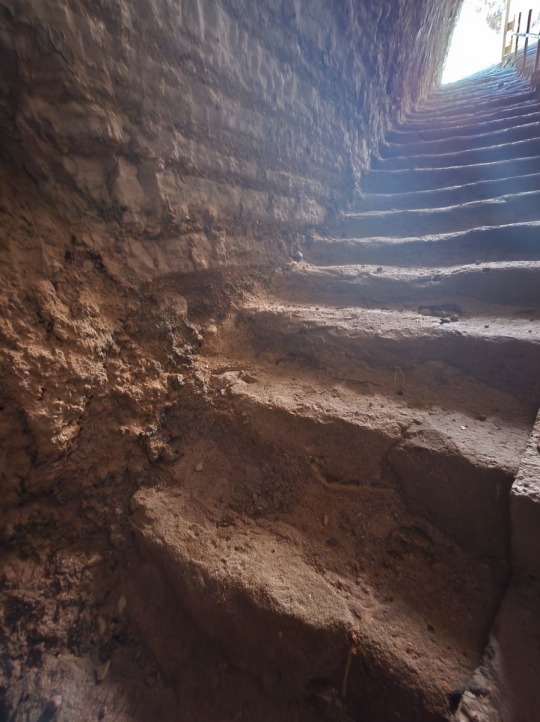
View On WordPress
#Barak#Deborah#ebenezer#hatsor#hazor#king jabin#matzebot#prophet jeremiah#solomon#standing stones#tiglath pileser
0 notes
Text
Assyria - World History, Greek Pedagogical Encyclopedia, Ekdotike Athenon
Ασσυρία - Παγκόσμια Ιστορία Εκδοτικής Αθηνών 1990
Ассирия - всемирная история, Греческая педагогическая энциклопедия, Экдотика Афинон


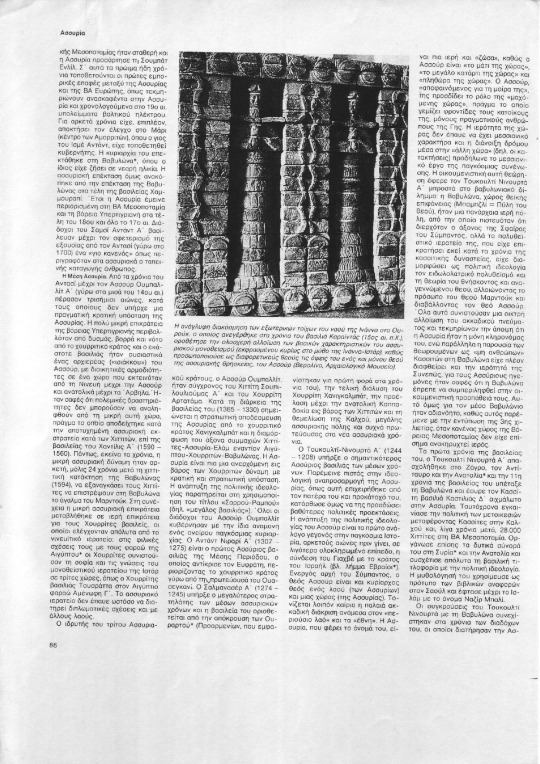




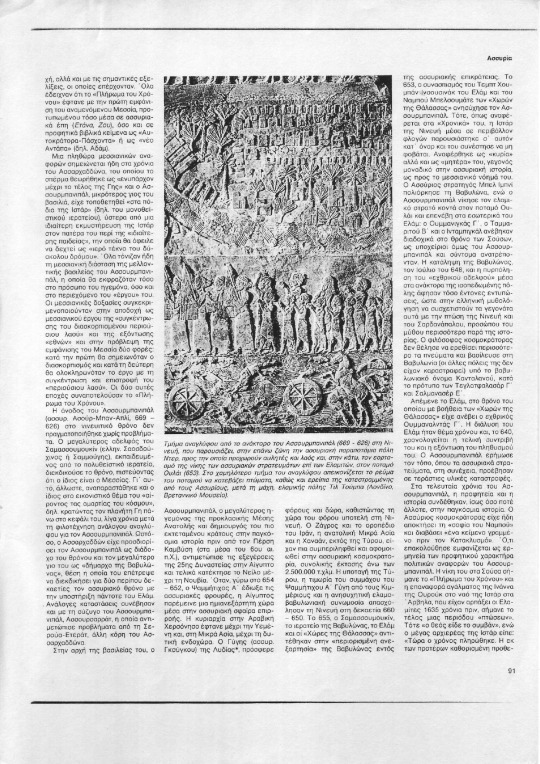
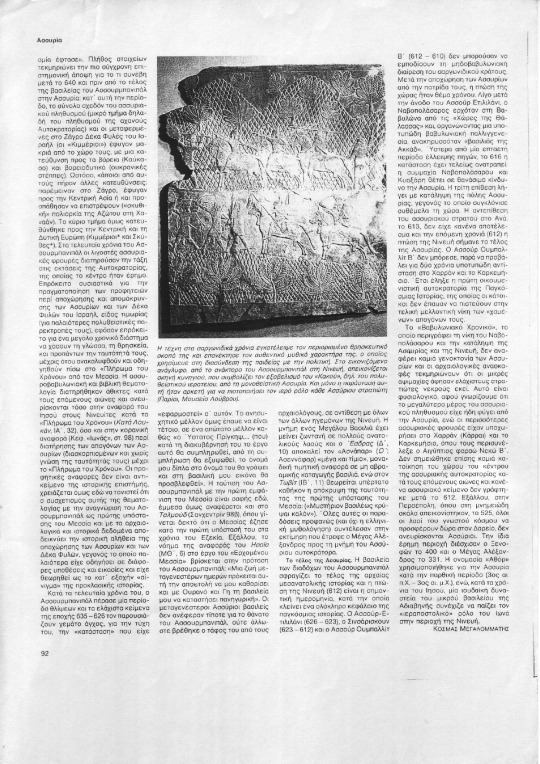
--------------------------
Κατεβάστε το άρθρο: / Download the article: / Скачать статью:
issuu
#Assyria#History of Assyria#Sargonid#Tiglath-pileser I#Shamsi Adad I#Tiglath-pileser III#Shalmanaser III#Assurnazirpal II#Semiramis#Tukulti Ninurta I#Mesopotamia#Babylonia#Elam#Hurrians#Hittites#Neo-Hittites#Assurbanipal
1 note
·
View note
Text
Mesopotamia is the region in southwestern Asia where the world's earliest civilization developed. The name comes from a Greek word meaning "between rivers," referring to the land between the Tigris and Euphrates rivers¹. Mesopotamia has a long and rich history that spans from the prehistoric period to the Arab conquest in the 7th century CE. Here is a brief timeline of some of the major events and periods in Mesopotamian history:
- **Prehistoric period (c. 10,000-3500 BCE)**: The earliest human settlements in Mesopotamia date back to the Paleolithic era. During the Neolithic era, agriculture and animal domestication were introduced, leading to the development of villages and towns. The Ubaid period (c. 6500-3800 BCE) saw the emergence of the first temples, irrigation systems, and social stratification. The Uruk period (c. 4000-3100 BCE) witnessed the rise of the city of Uruk, the invention of writing (cuneiform), and the formation of the first states.
- **Early Dynastic period (c. 2900-2350 BCE)**: This period is characterized by the emergence of city-states, each ruled by a king who claimed divine authority. The most prominent city-states were Uruk, Ur, Lagash, Kish, and Nippur. They often competed and fought with each other for resources and prestige. The Sumerian King List, a legendary record of kingship, dates from this period. The Sumerians also developed a rich literature, art, mathematics, astronomy, and law.
- **Akkadian period (c. 2350-2150 BCE)**: The Akkadian Empire was the first empire in history, founded by Sargon the Great, who conquered most of Mesopotamia and parts of Syria, Anatolia, and Iran. The Akkadians adopted the Sumerian culture and language, but also introduced their own innovations, such as the use of seals and the development of a postal system. The Akkadian Empire collapsed after a series of invasions by the Gutians, a nomadic people from the Zagros Mountains.
- **Neo-Sumerian period (c. 2112-2004 BCE)**: The Neo-Sumerian period saw the revival of the Sumerian city-states, especially Ur, which became the capital of the Third Dynasty of Ur. The kings of Ur, such as Ur-Nammu and Shulgi, restored the Sumerian civilization and expanded their territory to include most of Mesopotamia and parts of Elam and Syria. They also built monumental ziggurats, temples, palaces, and canals, and codified the laws and administration. The Neo-Sumerian period ended with the invasion of the Elamites and the Amorites, who destroyed Ur and established their own kingdoms.
- **Old Babylonian period (c. 2000-1595 BCE)**: The Old Babylonian period is marked by the rise of Babylon, a city founded by the Amorites, who adopted the Akkadian language and culture. The most famous king of Babylon was Hammurabi, who unified most of Mesopotamia under his rule and issued the Code of Hammurabi, one of the oldest and most influential legal codes in history. The Old Babylonian period also saw the flourishing of literature, science, art, and religion, as well as the emergence of the Old Assyrian Empire in the north, which was known for its trade and diplomacy. The Old Babylonian period ended with the invasion of the Hittites, who sacked Babylon and weakened its power.
- **Kassite and Middle Assyrian period (c. 1595-1155 BCE)**: The Kassites were a people from the Zagros Mountains who conquered Babylon and ruled it for about 400 years. They adopted the Babylonian culture and religion, but also introduced the use of horses and chariots, and established diplomatic relations with other powers, such as Egypt and the Hittites. The Middle Assyrian period saw the expansion of the Assyrian Empire, which reached its peak under Tiglath-Pileser I, who conquered parts of Anatolia, Syria, and Babylonia. The Assyrians were known for their military prowess, brutality, and monumental architecture.
- **Neo-Babylonian period (c. 626-539 BCE)**: The Neo-Babylonian period was a time of cultural and political revival for Babylon, which regained its independence from the Assyrians and rose to prominence under the Chaldean dynasty. The most famous king of this period was Nebuchadnezzar II, who rebuilt Babylon into a magnificent city, with the Hanging Gardens, the Ishtar Gate, and the Tower of Babel. He also conquered Jerusalem and deported many Jews to Babylon. The Neo-Babylonian period ended with the conquest of Cyrus the Great, the founder of the Persian Empire, who captured Babylon and freed the Jews.
- **Achaemenid period (c. 539-331 BCE)**: The Achaemenid period was the time when Mesopotamia was part of the Persian Empire, the largest empire in history at that time. The Persians respected the cultures and religions of their subjects, and allowed a degree of autonomy and self-government. They also built roads, canals, and postal systems, and promoted trade and commerce. The most famous Persian kings were Cyrus the Great, Darius I, and Xerxes I, who fought against the Greeks in the Greco-Persian Wars. The Achaemenid period ended with the invasion of Alexander the Great, who defeated the Persians and conquered most of their empire.
- **Hellenistic period (c. 331-141 BCE)**: The Hellenistic period was the time when Mesopotamia was under the influence of Greek culture and language, following the conquest of Alexander the Great. After Alexander's death, his empire was divided among his generals, and Mesopotamia became part of the Seleucid Empire, which ruled most of Asia Minor, Syria, and Iran. The Seleucids faced resistance from the native peoples, such as the Parthians, who eventually broke away and established their own empire in the east. The Seleucids also faced competition from the Romans, who gradually expanded their power in the west.
- **Parthian period (c. 141 BCE-224 CE)**: The Parthian period was the time when Mesopotamia was part of the Parthian Empire, which ruled most of Iran, Iraq, and parts of Central Asia. The Parthians were of Iranian origin, and revived the Persian culture and religion, especially Zoroastrianism. They also adopted elements of Greek and Babylonian culture, and fostered a rich and diverse civilization. The Parthians were famous for their cavalry and archery, and resisted the Roman attempts to conquer them. The most famous Parthian kings were Mithridates I, who expanded the empire to its greatest extent, and Vologases I, who restored the city of Seleucia and made it his capital.
- **Sasanian period (c. 224-651 CE)**: The Sasanian period was the time when Mesopotamia was part of the Sasanian Empire, which replaced the Parthian Empire and claimed to be the successors of the Achaemenids. The Sasanians were also of Iranian origin, and promoted the Persian culture and religion, especially Zoroastrianism. They also developed a sophisticated administration, legal system, art, and architecture. The Sasanians were the main rivals of the Byzantine Empire, and fought several wars with them over the control of Mesopotamia and Syria. The most famous Sasanian kings were Shapur I, who captured the Roman emperor Valerian, and Khosrow I, who reformed the empire and patronized science and literature.
- **Arab period (c. 651-1258 CE)**: The Arab period was the time when Mesopotamia was conquered by the Arab Muslims, who brought a new religion, Islam, and a new language, Arabic, to the region. The Arabs established the Umayyad Caliphate, which ruled most of the Middle East, North Africa, and Spain. The Umayyads were succeeded by the Abbasid Caliphate, which moved the capital from Damascus to Baghdad, and made Mesopotamia the center of the Islamic world. The Abbasids presided over a golden age of culture, science, and learning, known as the Islamic Golden Age. The Abbasid period ended with the Mongol invasion, which destroyed Baghdad and much of Mesopotamia.
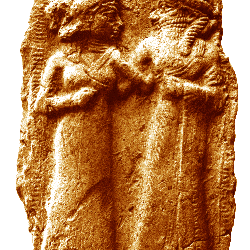
0 notes
Text
El Imperio hitita en su máxima extensión c. 1300 a. C. (indicado en rojo. El área de influencia de Eyptian está indicada en verde).
KASKIANOS

Los kaska o kaskianos eran una tribu del Ponto, en el norte de Anatolia (actual Turquía ), alrededor de la desembocadura del río Kizil Irmak, limitando y hostigando constantemente al imperio hitita . Esa área es principalmente de naturaleza montañosa, y allí los Kaska ocuparon asentamientos simples que presumiblemente formaron una confederación flexible.
La primera aparición registrada de los Kaska en la historia fue durante el reinado de Hantili I (c. 1590 a. C. - 1560 a. C.), cuando conquistaron territorios, incluida la ciudad santa de Nerik. La ciudad no pudo volver a estar bajo el control hitita hasta dos siglos después.
La Kaska penetró repetidamente en tierras hititas, pero nunca con una ocupación permanente, excepto en el área alrededor de la ciudad de Nerik, que era la puerta de entrada entre los territorios de Kaskan y los hititas. Durante el reinado de Tudhaliya, una importante invasión de Kaska -quizá al mismo tiempo que los ataques de otros enemigos hititas- llevó a la breve ocupación de la capital de los hititas, Hattusa, que fue incendiada hasta los cimientos (c. 1380 a. C.).
GRAN PARTE DEL REINADO DE MURSILI II (C. 1321 A. C. - 1295 A. C.), UNO DE LOS REYES MÁS GRANDES DE LOS HITITAS, SE DEDICÓ A CAMPAÑAS CONTRA KASKA.
Los hititas, a su vez, dirigieron muchas campañas punitivas contra el territorio de Kaska a lo largo de su historia, sin poder nunca subyugar el área. Gran parte del reinado de Mursili II (c. 1321 a. C. - 1295 a. C.), uno de los reyes más grandes de los hititas, se dedicó a campañas contra Kaska. Mursili declaró que en su tiempo hubo un líder de Kaskan llamado Pihhuniya que actuó como rey de Kaska, algo nunca antes visto en los asuntos de Kaskan. De vez en cuando, los jefes hititas y kaska lograron concertar tratados de coexistencia pacífica, como fue el caso del rey hitita Arnuwanda I.
La Kaska se unió a otros invasores desde lejos, los Pueblos del Mar y los Frigios, en el colapso final del imperio Hittie c. 1200 a. C. Después de eso, y dado que los registros hititas son nuestra principal fuente sobre Kaska, les perdemos la pista; se desvanecen a medida que cambia el panorama político y étnico general de Anatolia. Sin embargo, se hace referencia a ellos en el vecino imperio asirio algo más tarde, cuyo rey Tiglath-Pileser (c. 1112 a. C. - 1072 a. C.) luchó contra las fuerzas de Kaskan. La última referencia a los Kaska proviene de la época del rey asirio Sargón II alrededor del 700 a. C., quien también luchó contra ellos.
0 notes
Text
2 Kings 16: 10-14. "The Sketch."
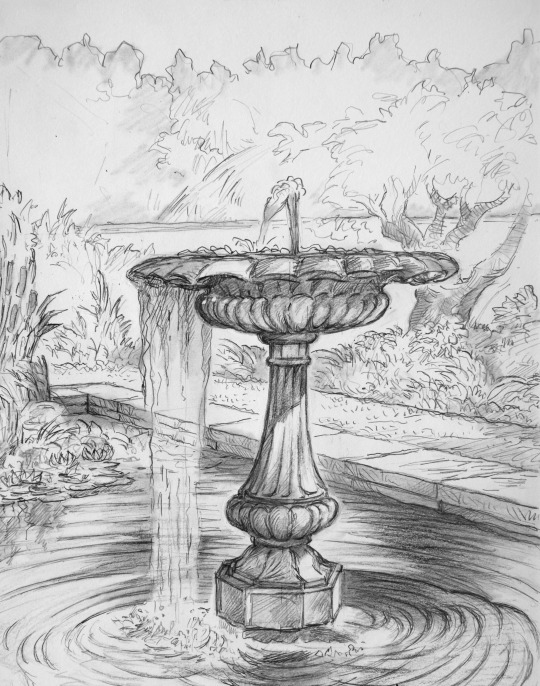
No, we are not talking about Chris Colfer. This is discussion here involves what is called Kabbalah. Kabbalah like Tantra, which involves Mandala, "the map" or "the zone". It is much more than data visualization or guided meditation. The goal is to use various configurations of the alefbeis to wake up the sentient aspects of the brain, sort of like splashing fertlizer on plants.
While the process of reading and writing anything involves "mapping" or "zoning" Kabbalah using the Torah and the books of the Tanakh does far more than to teach us to imagine something that can only take place in the mind. To make it work, Jewish sages say you need to read the Torah and all scripture in fact along four dimensions called pardes:
Jewish Bible interpretation methods classify four such stages or levels: P'shat (straight, direct, literal), Remez (hinted-at), D'rash (inquire, seek) and Sod (secret, mysterious). These four levels are called PaRDeS for short, as an acronym.
In the following section, the process begins with a sketch of an altar. The altar is not real, but sketching the altar in the mind as the script, the interpretations and the Gematria state will turn it into an object lesson that diminishes a portion of the wavelength of a sinful animal man, and tune him up to the higher magnitude of a sentient man.
Each one these Kings, Princes, Captains, etc. is an object lesson that illustrates conversion from one to the other, sometimes back and forh. In this case Ahaz, who grasps, was trying, like a retarded caterpillar to go back into the egg stage of his life rather than the coccoon. Then he comes up with an idea for how to make up for lost time:
10 Then King Ahaz went to Damascus to meet Tiglath-Pileser king of Assyria. He saw an altar in Damascus and sent to Uriah the priest a sketch of the altar, with detailed plans for its construction.
11 So Uriah the priest built an altar in accordance with all the plans that King Ahaz had sent from Damascus and finished it before King Ahaz returned.
12 When the king came back from Damascus and saw the altar, he approached it and presented offerings[a] on it.
13 He offered up his burnt offering and grain offering, poured out his drink offering, and splashed the blood of his fellowship offerings against the altar.
14 As for the bronze altar that stood before the Lord, he brought it from the front of the temple—from between the new altar and the temple of the Lord—and put it on the north side of the new altar.
Ahaz realizes if he goes to Uriah, "the flame" he will become who he is meant to be. He goes to Damascus, the traffic circle in life where one can go around and take a different route, and meets with the King of Assyria, who has put him in bondage. Hesketches out a plan for a new kind of altar. Uriah the priest agrees with the concept:
"The verb אור ('or) means to be light or to give light; to shine. This verb's primary derivative is the expectable noun אור ('or), meaning light.
The 'metaphor' that relates light to wisdom may not be a metaphor, or at least not to the ancients. In our article on the verb נהר (nahar), meaning both to flow and to shine, we show that the ancients had a surprisingly solid grasp of Relativity Theory."
Ahaz's request for his freedom is granted. His sketch becomes reality and he is allowed to move his new altar beyond the Bronze Altar.
The Bronze Altar is what becomes of a pale pasty lad who climbs Sinai to meet with Ha Shem on Horeb. The Light of Ha Shem on Horeb is said to bronze the skin like all good Jews possess.
To move past the moment one sees God on Sinai is always the objective. If we examine the places in the Torah where Moses meets with God and then read on, we learn our real perfected human self takes a long time. But first, all doubt about the existence of God has to be whet, tested, and changed. This requires movement beyond the tent, the shul, the altar, even the Torah itself towards the North, where what God knows what man can come to know become one.
So, really, a sketch of this is all we will really ever have until we actually do it. While it is the ultimate experience of the sublime, to be caught in the gaze of Ha Shem, one must still return to this plane of existence and its troubles and that, not firm knowledge and experience of the Presence of God is what requires adjustment not the other way around.
Human beings are capable of some truly amazingly despicable things, and the themes around them are not at all like those one is exposed to by the Eye of Ha Shem. The conclusion one draws about God and what differentiates Him from us is His value system.
One can say after exposure to Ha Shem "I now know this Person. He is my friend" and all will understand exactly what that means where mankind is failing to sketch him properly.
The Values in Gematria for the above verses are:
v. 10: The Sketch of the Altar. Now an Altar is a dividing line. Any thing that separates the man from the beast is an Altar. From the first fresh scent of our first smelly locker room sweat sock to the end of a World War, Altars are instruments of change, planned and unplanned. Which is better is decided between you and the Rabbi.
The Value in Gematria is 9904, טטאֶפֶסד, tatapesd, "you will lose."
Altars are for giving things up, not praying for more:
v. 11: The Altar is Built. the Value in Gematria is 6271, ובזא, and baza, "and in this..."
v. 12: When the King came back... one must naturally come back from a turn, AKA Damascus. The Value in Gematria is 4444, dddddd, or "Six Doors" AKA Six Days, which means we are always starting a Day 1 and ending Day 6 in some aspect of life; Shabbat, the fruits of the actions are also always happening. We observe Day 7 very formally as this is what is necessary to force civilization to recognize the place in which it lives and how its current fate is coming to pass.
Altars play a significant role in the observance of the Days of the Week and finally of Shabbat.
v. 13: Burnt, drink, grain, and blood offerings. These are discussed at length in the Torah but they are respectively:
Burnt- stop sinning.
Drink- go do something nice for someone else.
Grain- teach yourself something new.
Blood- be happy.
Things changed in Egypt. Humanity learned how to institutionalize sins God said were forbidden in the Age of Abraham and was not going to forget. So the construction of Altars and the performance of the Sacraments were instituted by Moses in hopes of what is called Mashiach, complete obsolesence of the sins men keep alive through habit and culture.
The Value in Gematria is 5497, the 16th.
"The ayin is the sixteenth letter of the alef-beis. According to the AriZal, the ayin is a vav contained in a nun. The nun represents humility. The vav signifies Torah, which descends from Heaven to earth in its inherent design of a hook or a chute. Vav also has the gematria of six. This represents the Six Orders of the Mishnah, the Oral Law. Only an individual who is unassuming, who has the humility of the nun, is fit to acquire the higher level of the vav, the “crown of Torah.”
v. 14: As for the Bronze Altar... the Value in Gematria is 9253, טבהג, tabhag, "the cook."
Only God can cook the mind and turn a man bronze. Even if we go to shul or mosque or church every week and study the scripture every night, only God can invoke the sentient spirit of man, and it must be done without help, only with intuition. The former are the diving board, but if man is to enter the pool, he has to jump and this he has to do alone and unaided.
So the Sketch begins in the mind when we start reading the Torah and concludes later in life after we finally get it and no longer need to rely on others to be fully constituted human beings made in our own image which, if done properly, will come to resemble God's as well.
0 notes
Text
They call me Tiglath-Pileser III, but I don't remember ever Pilesing anyone.
0 notes